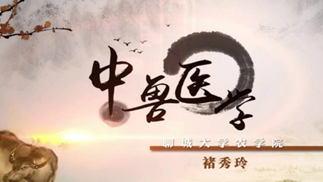
当前课程知识点:Tourism Policy and Planning > Week 5 Special Issues and Case Study > 5.2 From Capacity to Overtourism > 5.2.3 Measurement of Impacts
返回《Tourism Policy and Planning》慕课在线视频课程列表
We will let you know that there are physical and perceptual studies in the measurements may be produced, and both types of study are needed for planning and management purposes.
Who are the stakeholders in the tourism activities? How do they view the impact of tourism?
We would like to invite you to share some thoughts in the comments section below.
返回《Tourism Policy and Planning》慕课在线视频列表
在上一节中,
我们讨论了研究和理解旅游影响的一些挑战。
在我的研究中,
我主要关注环境影响,
但这些问题也适用于经济和社会文化影响。
现在,我继续讲述如何实际测量影响。
研究主要有两种类型。
首先是所谓的物质影响,
其次是感知影响。
我将依次解释这些内容。
物质影响的研究涉及对环境变化的科学测量。
有时研究侧重于特定活动,
我们想知道滑雪的影响或参观博物馆的影响,
或游泳或划船的影响,
或任何活动。
当人们与我谈论影响或寻求建议时,
他们经常会询问具体的活动。
他们会说当我打算将公园开放给越野车或雪地车时,
如果这样做,
会对环境产生什么影响。
第二组研究涉及生态系统,
旅游业对特定类型环境的影响,
如珊瑚礁或红树林,
或其他被视为对旅游业非常敏感的海滩或其他环境。
另一种整理文献的方法是考虑特定的环境成分、
对洞穴或石灰岩等地质的影响,
或对土壤的影响,
对植被的影响,
对野生动物的影响,
对空气质量的影响,
对噪音的影响等。
这也是许多文献的重点所在,
有些研究试图将这些研究信息再次整合在一起,
这也是我在几个部分之前提到的书的重点。
所以,当人们喜欢采用科学方法时,
他们会提出科学的测量方法。
所以你会读到百万分之几,
如生物化学和氧气需求、
物种多样性
和诸如此类的测量方法。
我们发现这些关系不是线性的。
我的意思是少量的游客可以导致相当大的变化,
游客的增加可能会导致更多的变化,
但数量上不一样。
因此,在低水平的访问中发生了很多变化,
这非常重要。
这意味着休息区很难恢复,
正如一些人建议的那样,
因为变化发生得很快。
人们研究的野生动物、土壤、植被、水等的背景是不同的。
这意味着,
很少有综合研究同时考虑到所有的环境因素,
很少同时知道经济、社会和文化影响。
因此,这项工作相当零碎,
同时对土壤、土壤植被、水质或野生动物这些方面
进行研究非常罕见。
我不知道我听的这个演讲的人的背景。
但我想,越来越多的学生对旅游业感兴趣,
但他们还没有做好进行环境影响研究的准备。
随着商学院越来越多地开设旅游专业,
因此学生在旅游以外的环境过程或相关文化方面的
课程越来越少。
他们往往没有做好充分的准备
来进行我所说类型的影响研究。
第二种类型的研究是感知研究,
人们对旅游业的影响有什么看法,
他们是如何看待旅游业的,
并且测量方法是不同的。
例如,
科学研究可以用化学物质和百万分之一来测量水质,
而普通人通常根据水的颜色来判断水质,
是否有气味,
是否有东西漂浮在水中。
因此,感知研究中的测量方法不同于科学家使用的方法。
还有许多不同的利益相关者,
他们对可接受或不可接受的环境变化有不同的看法。
因为他们是利益相关者。
因此,他们的看法会因他们的背景和偏好而有所不同。
如果你读过这些感知研究,
你会发现人们常说结果是矛盾的。
提出意见的人的社会经济特征
并不会在每个地方产生相同的结果,
如女性对一个地方有某种认知,
对另一个地方认知则不同。
这并不奇怪,
因为感知研究的结果是特定的或偶然的。
这取决于一个地方可能存在的其他选择,
或者他们是否认为改变是重要的。
所以,这意味着我们不能通过感知研究
从一个环境到另一个环境,
从一个地方到另一个地方进行归纳。
这就是为什么我必须和人们,
和当地人谈谈他们对旅游业的看法,
他们的想法,
他们想要什么,
并进行这种公众参与。
这两种类型的研究都是必要的,
既有物质研究,
也有感知研究。
因为它们提供了不同种类的信息。
实现规划和管理目的需要这两种类型的研究。
在讨论了进行影响研究的复杂性,
并可能产生不同类型的测量研究,
并试图对这种复杂的情况进行概括。
第一点我已经讲过了,
就是破坏率和恢复率经常有很大的不同。
破坏发生的速度很快,
人数很少,
但恢复需要很长时间。
在海拔较高的山区和纬度较高的地区,
越接近北极或南极,
那么恢复起来就越来越慢。
虽然我们可以讨论不同类型旅游的影响,
但我们可以通过考虑脚步和车辆的影响来进行总结。
事实上,很多影响都是由人走路、
轻微脚印重复很多很多很多次,
以及车辆,
包括汽车还有公共汽车、飞机、火车等引起的。
因此,如果我们考虑在在河上划独木舟这样的活动,
其影响不在于划船本身,
而在于脚步、汽车步对河岸的的影响,
是人们进入旅游休闲场所,
试图让他们的独木舟进出水中。
因此,从短期来看旅游业的影响,
最好是考虑脚步的影响以及汽车和其他车辆带来的影响。
从管理角度来看,
我认为从点、线和区域的角度来考虑旅游系统是非常有用的。
点是所有游客必须接近的小地方,
以获得旅游体验。
所以,瀑布就是一个例子或形象,
每个人都必须离得很近,
这意味着这个地方很容易拥挤,拥塞,过度使用。
事实上,这样的吸引力很容易被摧毁。
虽然人们很集中,
但从他们身上赚钱相对容易,
而且也可以对他们进行管理。
线或路线系统是指路、道路、河流、海岸线,
其挑战在于确保不会建成整条路线。
但也有很多旅游者聚集的地方,
可以从中赚钱,
还有沿线其他未开发的地区。
例如,在印度尼西亚的巴厘岛,
他们指定特定的道路供人们驾驶,
这样他们就可以欣赏到稻田的美景。
不幸的是,由于观光客人数众多,
人们沿着道路修建餐厅和纪念品商店,
因此在指定的道路上很难看到稻田。
所以,在路线系统中,
我们必须把发展分为发达区和不发达区,
就像点一样,
就像串上的珠子一样。
最后,在许多像公园、保护区这样的区域,
很难管理分散在这些很广阔区域的人。
因此,我们必须找到集中的方法,
既方便管理,
又能从中赚钱,
例如设施和服务中心所在的接入点。
因此,点、线和区域的简单概念
可以非常有效地用于管理步行游客的行为,
以及由此产生的影响。
在我们进入下一节时,
我们将讨论一些强调旅游区研究管理的概念。
-1.1 Tourism Planning and Policy
--1.1.1 Link Between Policy and Plans
--1.1.2 Tourism Policy Is Influenced by Multi-sectoral Links
--1.1.3 Policies Are "Wish Lists."
--1.1.4 Policies Impacting the Tourism Sector
--1.1.5 Who Formulates Policies?
--Discussion: Is Tourism Policy Sustainable in Your Respective Countries/Regions?
-1.2 Planning Principles
--1.2.2 Reasons for a Tourism Plan
--1.2.3 Planning Principles (1)
--1.2.4 Planning Principles (2)
--Article:Tourism Policy and Planning for Developing Countries
-1.3 Strategic Planning at Different Levels
--1.3.1 Planning at Different Levels
--1.3.2 Planning for Tourism in the Future
--Week 1 Quiz
-2.1 Planning in the Context of Tourism Development
--2.1.2 Tourism Planning for Destination Development and Management
-2.2 History of Tourism Planning Globally and Domestically
--2.2.1 Global and Domestic History of Tourism Planning
--2.2.2 Participants in Tourism Planning
--2.2.3 What's the Difference about Tourism Planning between China and the Western Country?
--Discussion: What's the Difference about Tourism Planning between China and the Western Country?
-2.3 Tourism Planning Processes and Practices
--2.3.1 Theory and Practice of Tourism Planning
--2.3.2 Resource Inventory and Demand Analysis
--2.3.3 Structure Planning for Tourism Growth
--2.3.4 Planning for Tourism Products
--2.3.5 Planning for Supply System and Regulation
--Article: Climate Change and Tourism: A Scientometric Analysis Using CiteSpace
-2.4 Changing Trends in Tourism Planning
--2.4.1 Changing Trends in Tourism Planning
--2.4.2 How Should China Develop Domestic Tourism in the Belt and Road Initiative?
--Week 2 Quiz
-3.1 Tourism Destination Area Planning
--3.1.1 The Key Terms of Tourism Destination Area Planning
--3.1.2 Tourism Destination Area Planning Approaches
--3.1.3 Tourism Destination Area Planning Process And Some Key Tools, Some Readings
--3.1.4 Tourism Destination Area Planning Process And Some Key Tools, Some Readings
-3.2 Sustainable Tourism Product Development
--3.2.1 The Key Terms & Framework of Sustainable Tourism Product Development
--3.2.2 Sustainable Destination Product Development Process
-3.3 Developing Tourism Events & Experiences
--3.3.1 Assessing And Evaluating Destination Plans
-3.4 Assessing and Evaluating Destination Plans
--3.4.1 Assessing And Evaluating Destination Plans
-3.5 The Hot Topics of Tourism Planning Technology
--3.5.1 What Should Be Pay Attention to When We Make Tourism Planning in China?
--3.5.2 How to Improve Tourism Experience During Tourism Planning Process
--3.5.3 What Are the Impact And Challenge of AI Technology to Tourism Planning?
--3.5.4 How Should We Developed Community Based Tourism Planning?
--Week 3 Quiz
-4.1 An Introduction to Tourism Impacts
--4.1.1 An Introduction to Tourism Impacts(1)
--4.1.2 An Introduction to Tourism Impacts(2)
--Discussion:Where Are You Coming From and Why Are You Taking This Course?
-4.2 The Economic Impacts of Tourism
--4.2.1The Economic Impacts of Tourism(1)
--4.2.2 The Economic Impacts of Tourism(2)
--Discussion:Could You Describe Both the Positive And Negative Aspects of Economic Impacts In Your Own
-4.3 The Socio-cultural Impacts of Tourism
--4.3.1 The Socio-cultural Impacts of Tourism
--Discussion:Could You Explain TheThree Specific Phenomena About Socio-cultural Impact
-4.4 The Environmental Impacts of Tourism
--4.4.1 The Environmental Impacts of Tourism
--Discussion:How Can Tourism Development Contribute or Make A Damage to The Environment Are Explained?
--Week 4 Quiz
-5.1 Host-guest Interaction and Tourism Development in Two Regions: Yunnan Province and Overseas
--5.1.1 Yunnan Province Tourism Development Master Plan 2011-2020
--5.1.2 IMT-GT Tourism Sector Strategy 2017-2036
-5.2 From Capacity to Overtourism
--5.2.1 The Study of Tourism Impacts
--5.2.2 Tourism Context and Impacts
--5.2.3 Measurement of Impacts
--5.2.4 Management Approaches and Related Concepts (1)
--5.2.5 Management Approaches and Related Concepts (2)
--Discussion: What is carrying capacity?
--5.2.6 Visitor Management Models (1)
--5.2.7 Visitor Management Models (2)
--Article: Behind the Masks: Tourism and Community in Sardinia
-5.3 Tourism Planning and Holistic Tourism: Governance and Innovation for A Destination Country
--5.3.1 Holistic Tourism: A Destination Governance Tool
--5.3.2 How Should Rural Area Benefit from Holistic Tourism?
--Week 5 Quiz
--Final Discussion and Reflection
--Final Quiz
